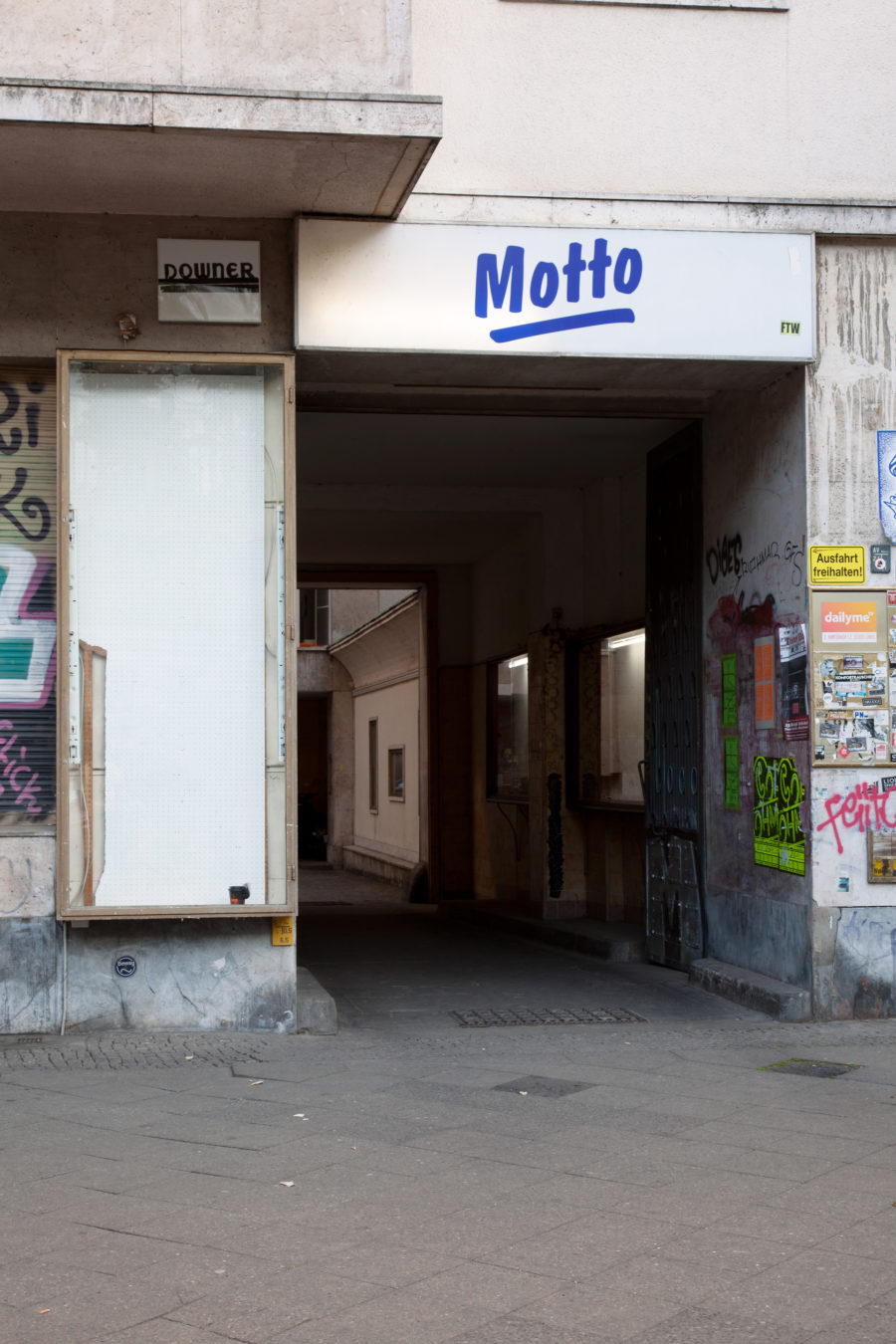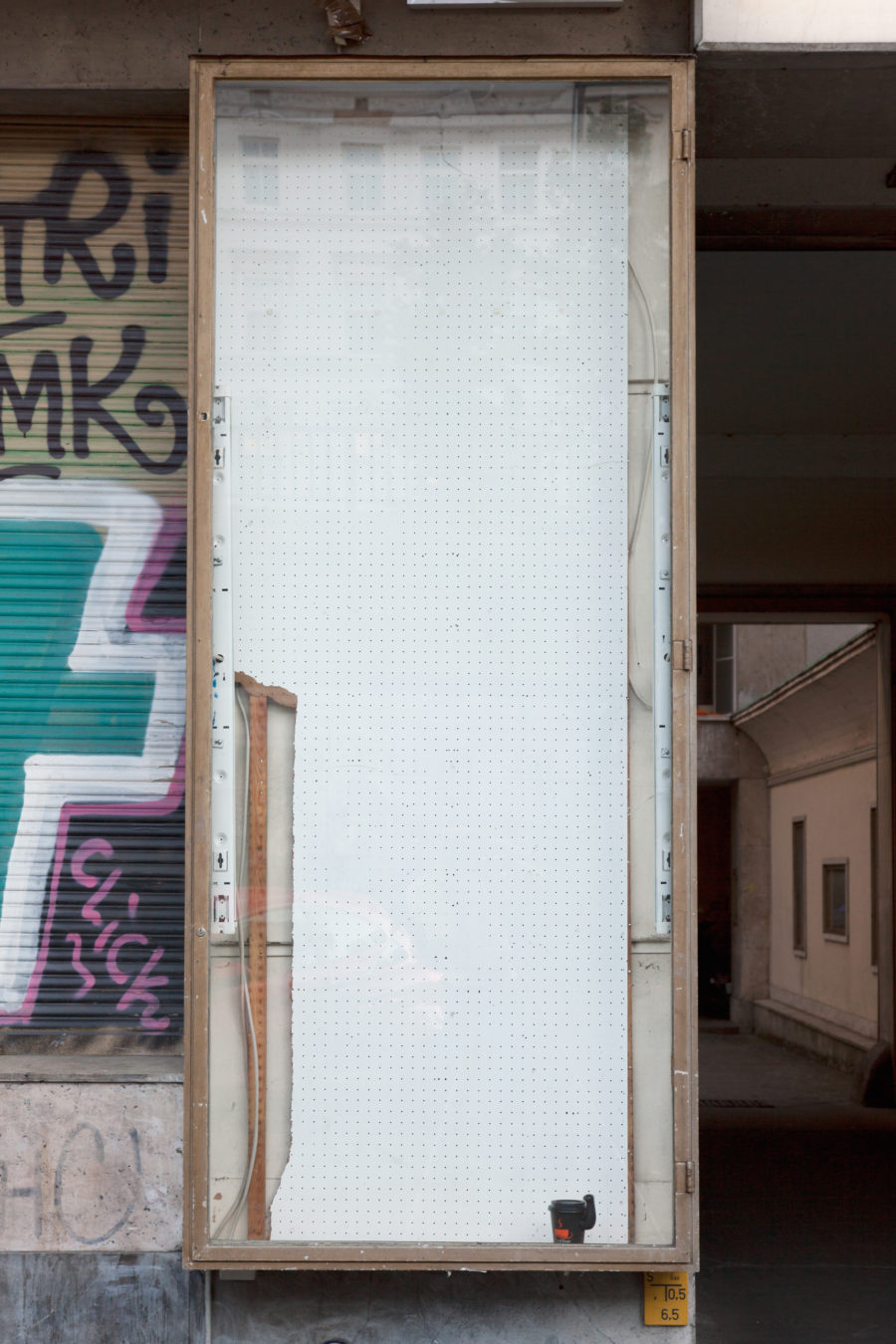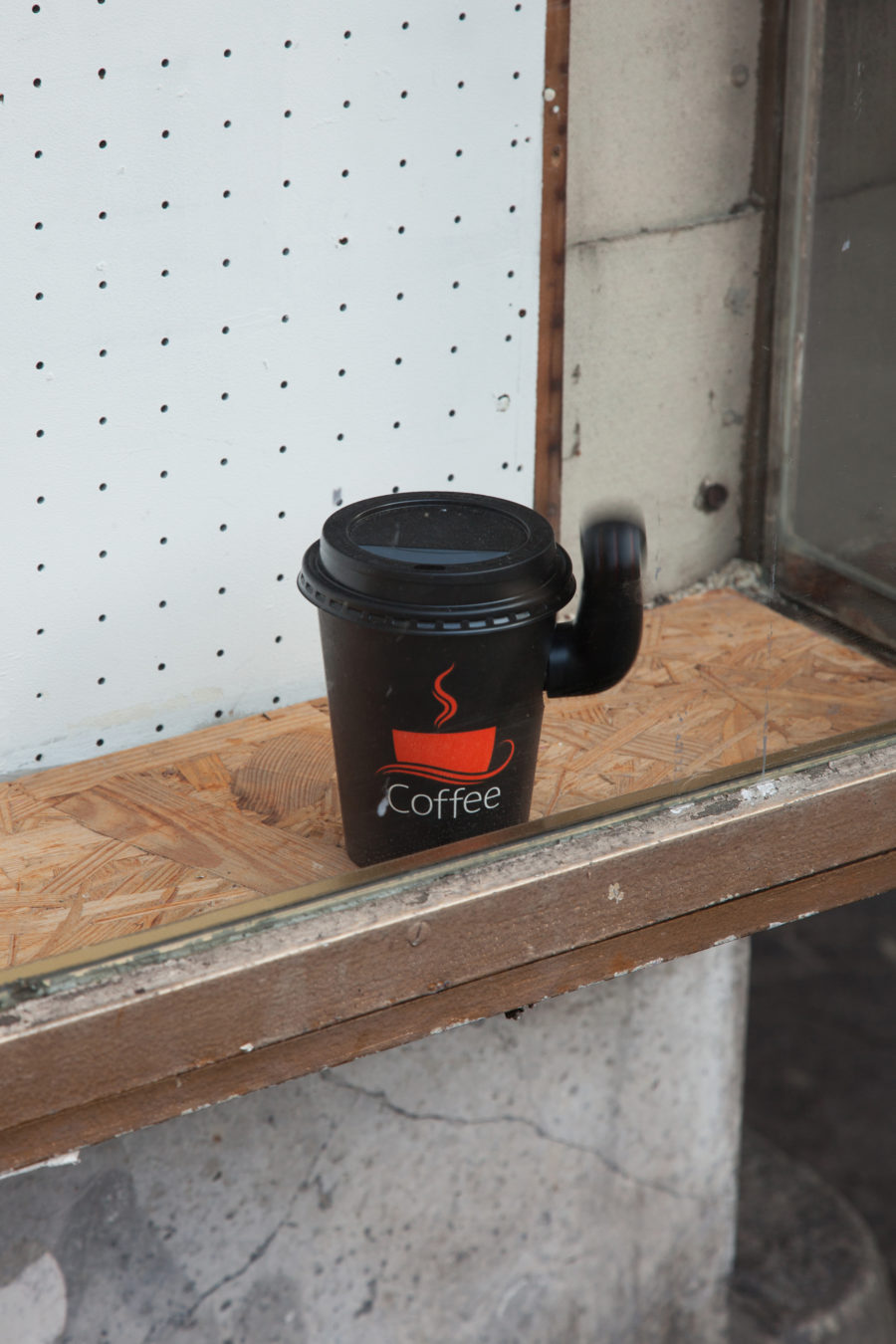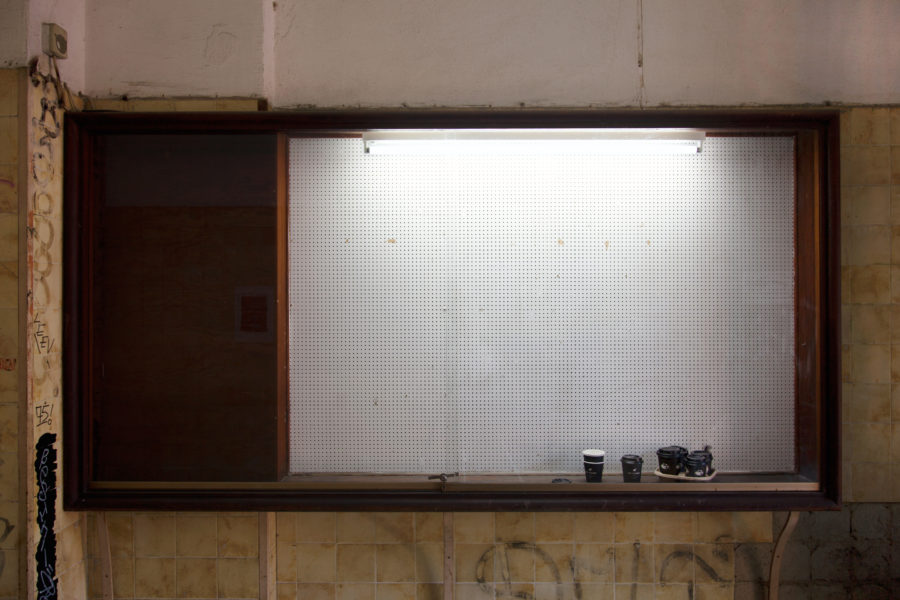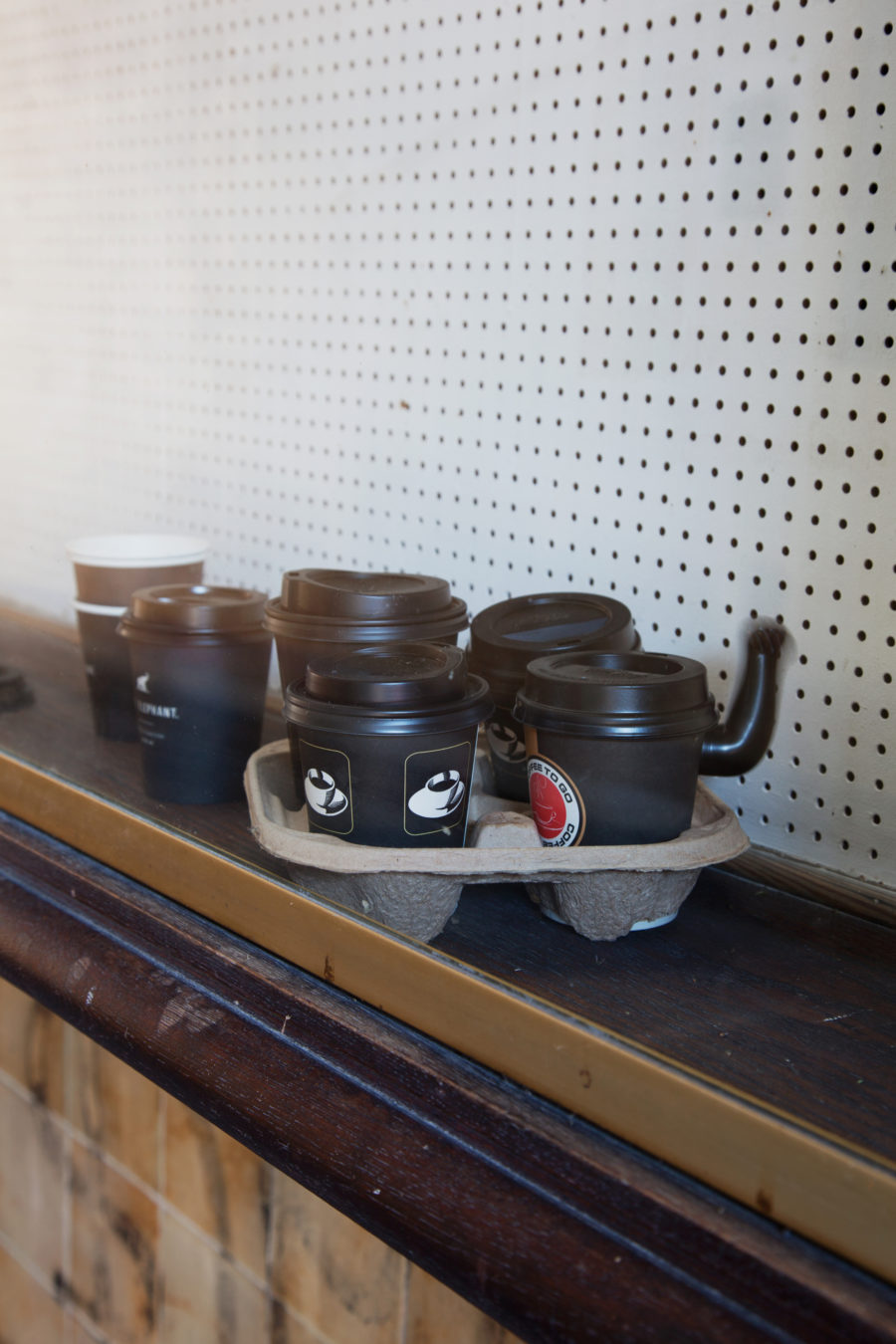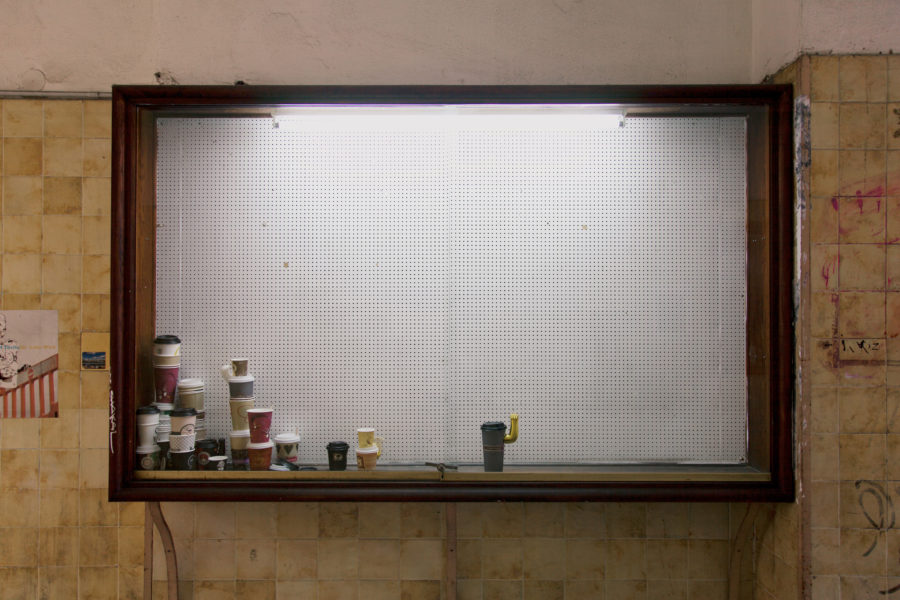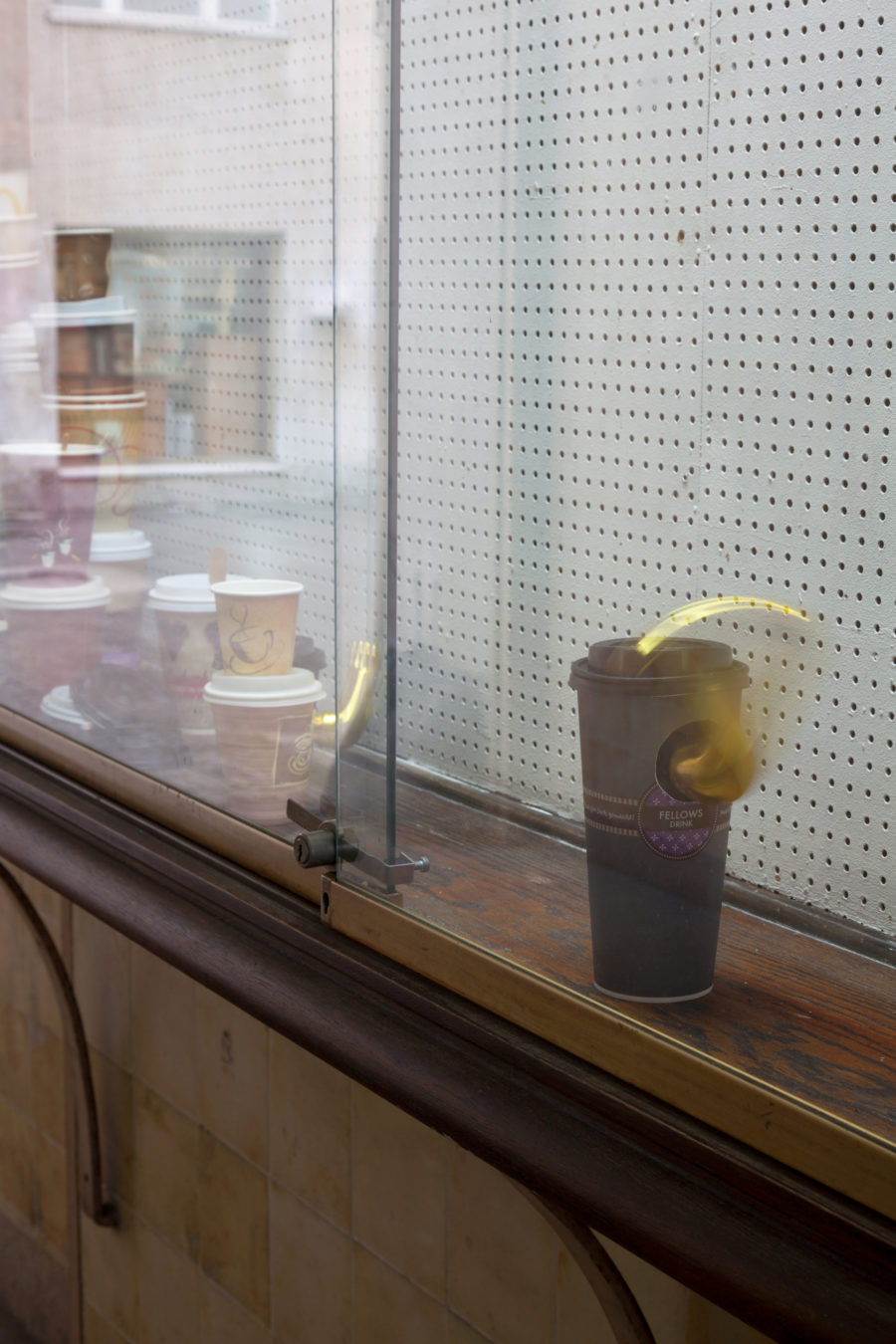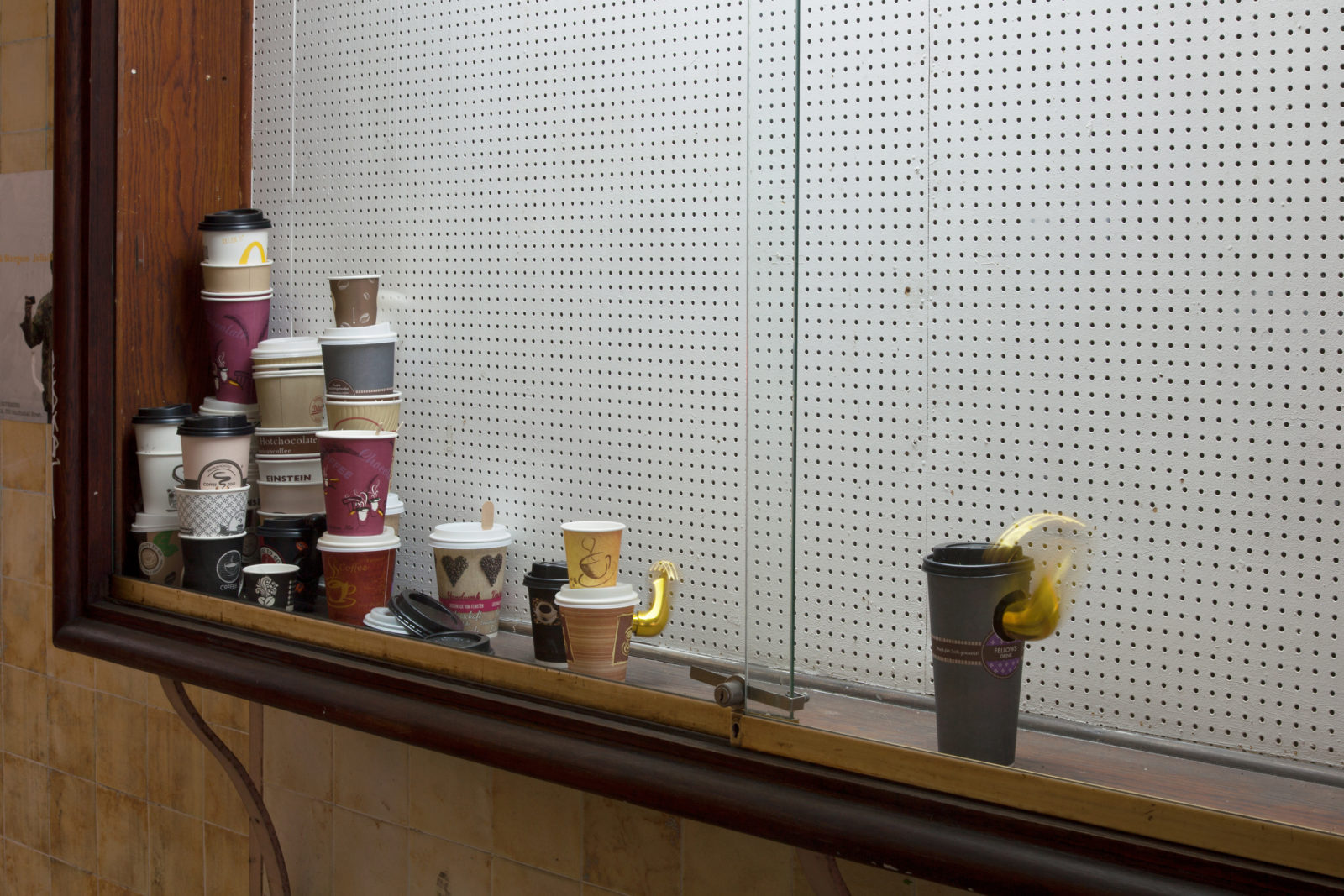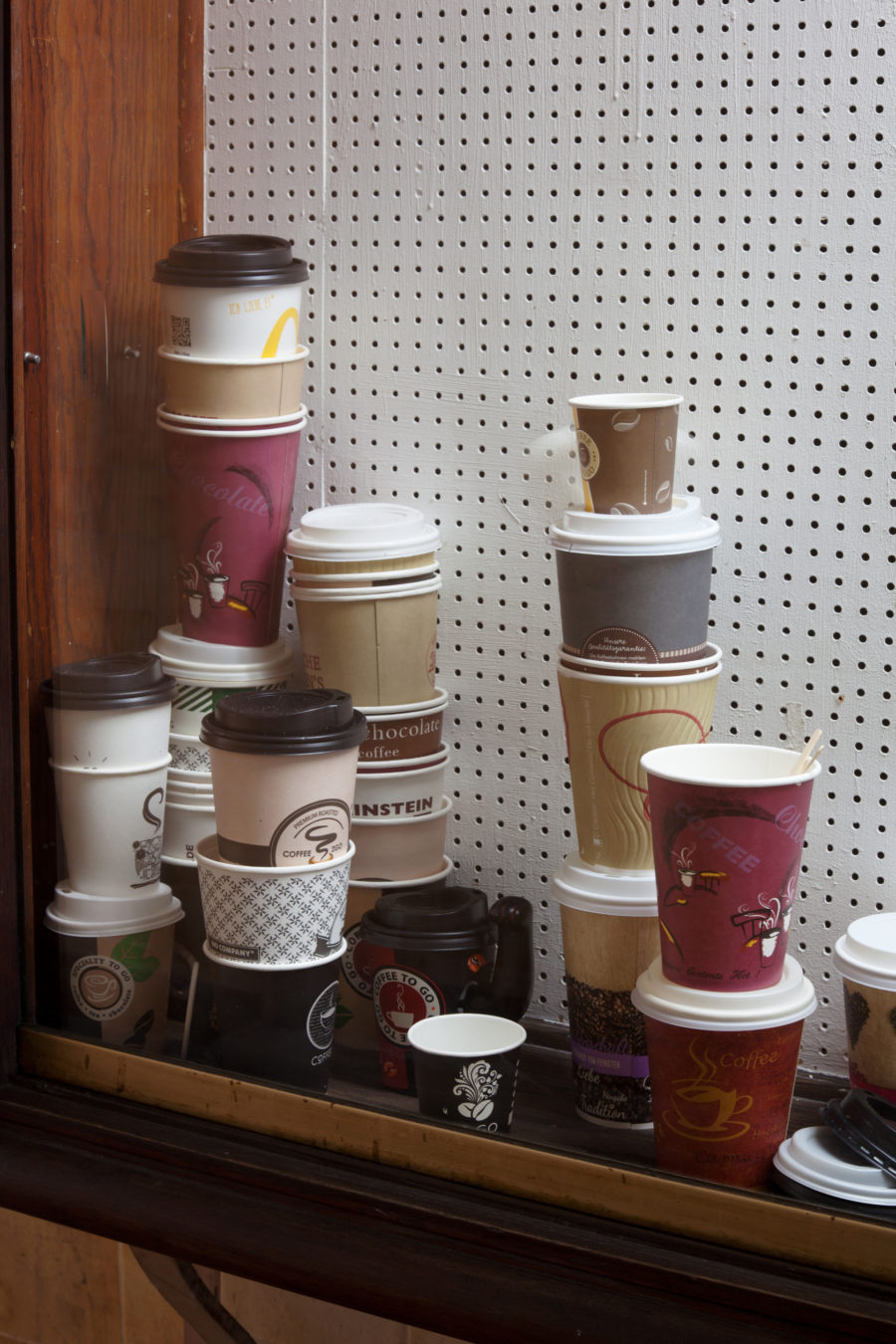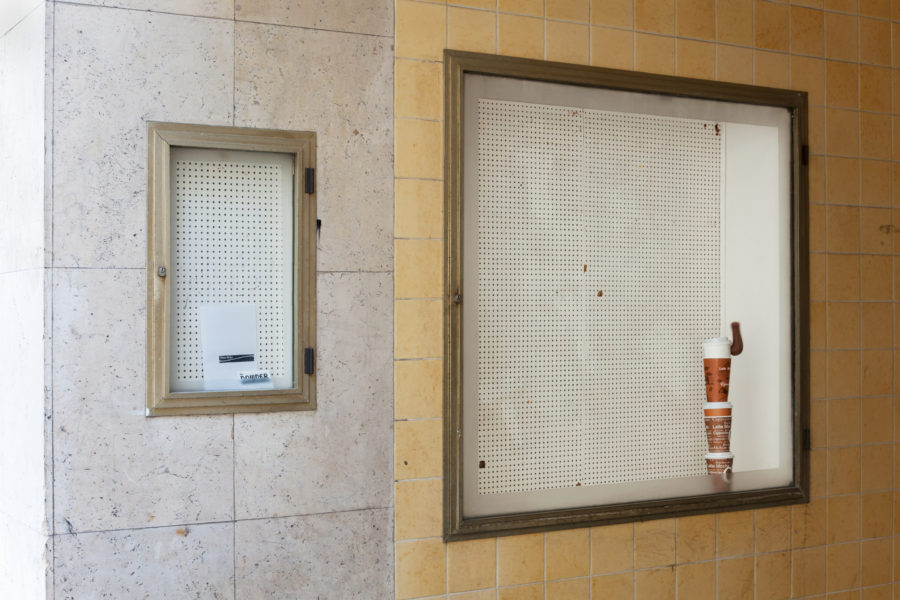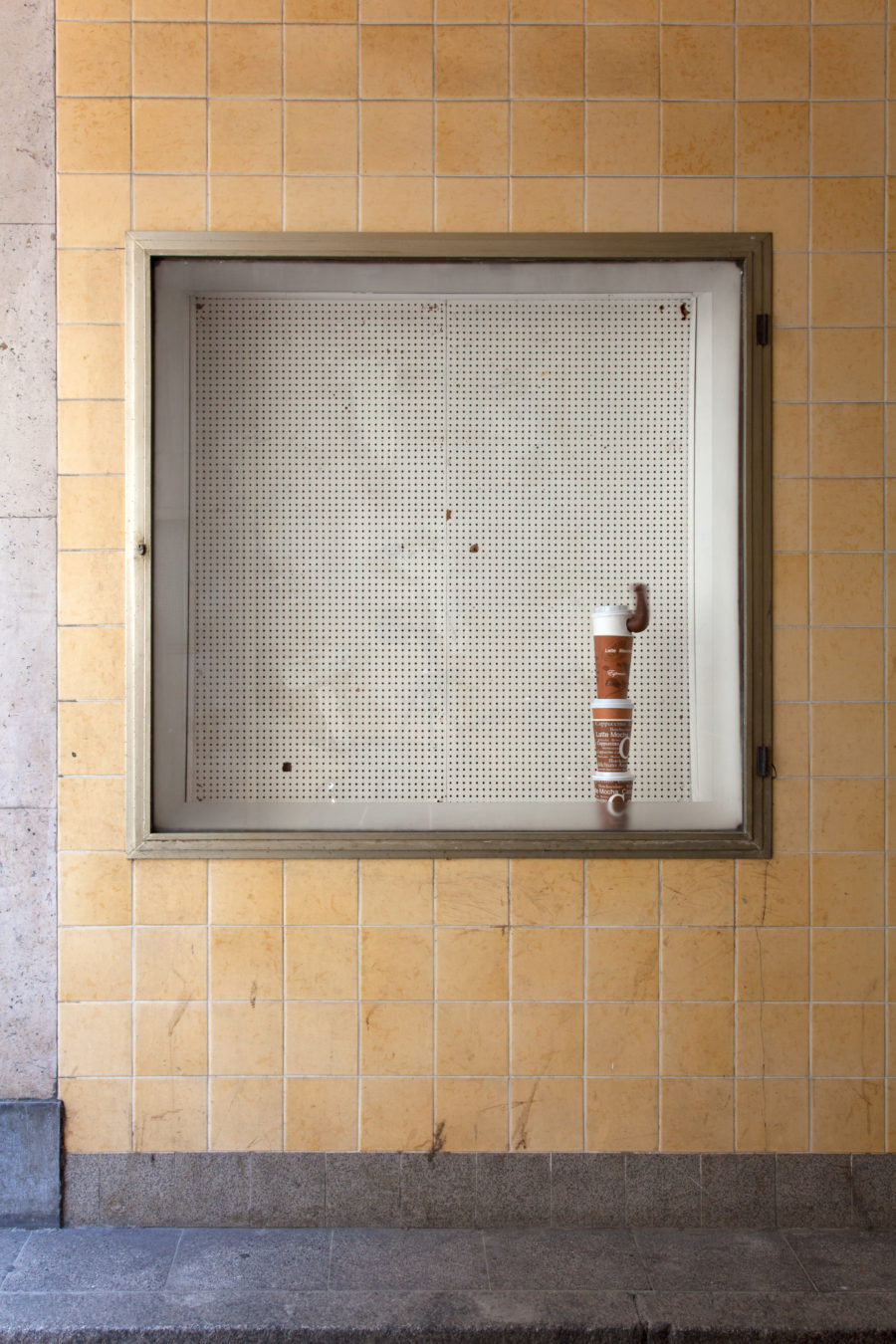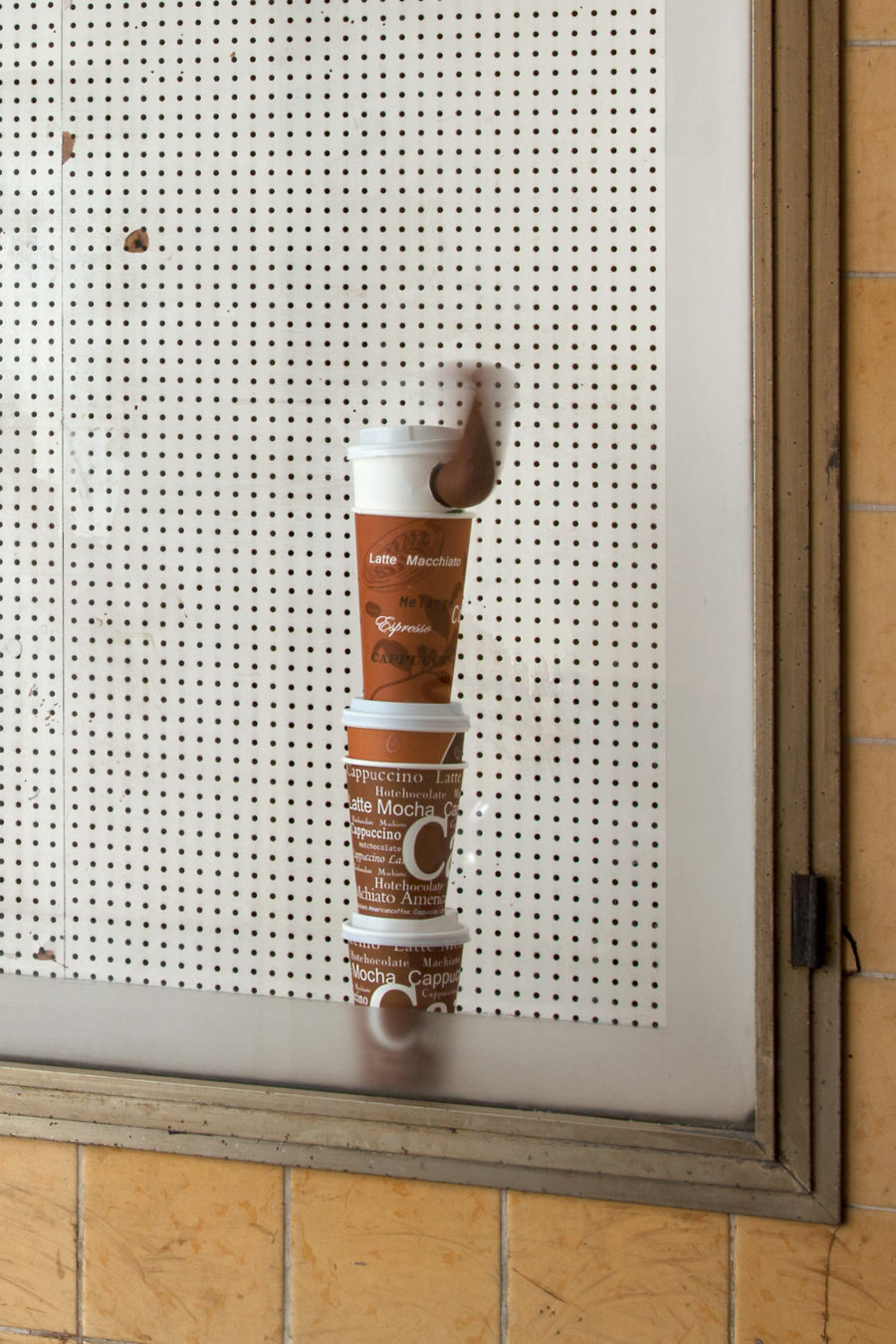Nina Beier
@
The Downer
Skalitzer Str. 68,
10997 Berlin, Germany
The first artwork I saw by Nina Beier was her performance Tragedy, which she has staged a number of times, but this particular version took place at Metro Pictures in New York on a muggy night in June 2012. Tragedy stars a dog laying on a Persian rug, splayed out and stock-still, playing dead. The performance inspires double takes on different emotional registers; the first is the need to confirm that one is seeing a live animal and not a hyperrealistic sculpture. After a few seconds of observation, one realizes, yes, the dog is shallowly breathing. But then one wonders how this dog is able to keep it together in a hot room filled with a hundred people. The dog isn’t exactly zen. It is still, but its somewhat anxious stare is directed at one person in the crowd. The dog’s trainer is mixed in with the gallery visitors, reassuringly staring back at the animal with a gaze that invokes supreme trustworthiness, indicating the praise, biscuit or whatever reward will be granted to the performer for a job well done. I am not sure how long the performance lasts, it could be anywhere from five minutes to a half hour. Time gets a bit suspended while watching Tragedy.
At this point, I wasn’t familiar with Beier’s work and I unexpectedly stumbled into the performance. Tragedy was featured in a jaunty summer group show about dogs – fittingly titled “Dogma” – and while the piece does feature a dog (and a live one at that), its intrigue and power far exceeded the context. It’s the only thing I still remember from the show. As I’ve learned more about Beier’s work over the subsequent years – and indeed now been able to enjoy an ongoing conversation with her in the months leading up to her exhibition at the Downer – I have come to see Tragedy as a decoder ring to her larger practice, which regularly digs into the more unsayableterritory of art. The fact that it was the first piece of hers I remember seeing is just dumb luck.
Deceptively familiar would be a good way of describing much of Beier’s work, and Tragedy is no exception. A conventional illustration of domesticity is doubled: the pet dog and the Persian rug. The fact that the dog cast for the part at Metro Pictures was a Golden Retriever, a quintessentially suburban American breed, made the tableau almost too rich. Despite itself, Tragedy is less ‘tableau’ and more ‘tableau vivant.’ In inviting her viewers to observe the ostensible nothing going on – which is actually completely riveting – Beier opens a space for considering a subject so familiar that rarely is a passing thought levied on it other than, “Oh, cute.” So after the brief confusion over what exactly is taking place, Tragedy is narrated by each viewer’s inner ruminations on dogs, domesticity, domestication, conditioning, trust, ownership and mortality, and that’s just the obvious stuff.
Funnily enough, Tragedy addresses its audience in the least dogmatic way possible, instead placing the onus of decoding its meaning into the hands of its viewers totally without didacticism. Gettingthe work doesn’t require an explanatory text or an understanding of Beier’s previous projects, but rather a willingness to dig around in one’s own ideas about its component parts. Tragedy doesn’t contribute to our understanding of these. Instead it inspires a meditation on what our understanding of them currently is and how we may have arrived at it.
At some point, the trainer rouses the dog and the audience snaps-to. The small resurrection leaves the door open for a reprise.
While the dog is still on the rug, Tragedy presents a scene aspiring to be a fixed image, though its failure to be completely still is what makes it captivating. A photograph of a dog lying on a rug can’t inspire the same stupefied reflection as seeing the it nervously performed for you. Instability – or unfixed-ness – runs through Beier’s practice. She selects and massages her materials not only into being strange enough to inspire a double take, but also into being myriad things simultaneously. One sees that the unfixed-ness literalized by the seeking gaze and the rise and fall of the dog’s shank exists metaphorically in Beier’s sculptures, assemblages and installations.
Beier’s research into stock photography banks is often mentioned in writings about her work. She has borrowed these images as templates for sculptures, reassembling in physical space the props used in the original photograph. Stock images in general, especially the type that Beier utilizes, have proliferated crazily over the past two decades. Cheaply made by arranging commonplace objects into theatrical still lives, these photos are also unfixed by design, aiming instead to fulfill a bevy of uses and in doing so appeal to the broadest group of paying licensers. Stock image banks host thousands of near identical images of the same objects in similar configurations. This deluge is a perfect illustration of contemporary image culture, in which the societal appetite for visual information is insatiable, but also the paradox of working on no assignment for no client. Thousands upon thousands of things are thrown at the wall to see if they stick, those that don’t just pile up.
Despite their volume, these images consistently employ fairly superficial metaphors: telephone and Ethernet cords signify connectivity and communication; coins and banknotes – commerce; eggs – fragility or fertility. They function almost like visual security blankets, reassuring those who use them that they won’t go over any potential audience’s head. Beier is guilty of employing the same tactic, at least at first glance. Her materials are often quotidian objects – sometimes they are aspirational ones – all of which elicit what I imagine are fairly standard responses from most people. They are familiar.
The seductiveness of familiarity may be what initially draws an audience to Beier’s work, like me to the dog on the rug. But as with the slipperiness of the tableau in Tragedy, one’s recognition is quickly complimented by the realization that whatever one is looking at has been changed or charged to allow it to point beyond its everydayness and into the murkier history that produced it. A cigar is never just a cigar. This is a meaningful duality in Beier’s approach: she simultaneously exploits the emotive, feeling, sensing context within which we are used to approaching art, as well as our contemporary collective unconscious that has ballooned to incorporate all manner of shared information, from Wikipedia to advertising to memes to political dog-whistling. Her work is particularly dependent on her audience’s preconceptions and it bends to confirm or challenge these depending on how willing each viewer is to reckon with them.
In one of Beier’s sculptures that uses coffee beans, a seemingly endless cascade of them spill forth from a tiny espresso mug, piling in a heap on the ground below. The sculpture seems unbound by the forces of the world, with the mug hovering half a meter off the ground (spoiler alert: it’s held up by the beans it is purportedly pouring). In this instance, stillness is unsettling rather than the opposite. This thing defies gravity. Its uncanniness leads one beyond the stock-image-level of communication. Sure this could be an illustration of the warm sensation that washes over you when you have a sip of your first morning cup, or abundance, movement and the effortlessness of global trade, and it is, but here somehow it’s also more. It wouldn’t be heavy lifting for a viewer to spin through these thoughts and end up thinking about the glorifying images of coffee harvesters in Latin America, Africa and South East Asia they have seen plastered on the walls of Starbucks worldwide. Then remembering that coffee is a product of imperialism, which now sits somewhere in the canyon between empowering and exploitative.
The things Beier brings into her work are loaded, but seeing them inspires the realization that everything is loaded. Elsewhere, Hermès ties show up. The ur-luxury-brand (it’s literally the first, or at least the longest operating) signals a very distinct version of entitlement. Their iconic patterned neckties caricaturize world culture with breezy nonchalance. All drawn with the same flattening hand, they illustrate safaris, Holland’s tulips and windmills, Native Americans dancing around a fire, Russian nesting dolls and Indian snake charmers. Another project involved a cache of engagement rings purchased second hand and shown together. The grouping contained rings sporting real diamonds alongside those fitted with cubic zirconias. I’m not sure if this fact was made clear to the audience to send them appraising or if the imposter rings were allowed to masquerade as the real thing with no one the wiser.
At some point, Beier told me about the anthropological term Material Culture. It refers to the study of society through the things it produces and that eventually trail in its wake. It also focuses on how these objects garner meaning, come to represent larger concepts and move between cultures. Beier’s work could be seen as an elucidation of this field, but I think that might be the stock-image-level reading. She does this, of course, collecting and investigating the products of our hyperactive, over-connected and often insolent culture. Concrete take-aways are more elusive, and Beier declines to share hers. Instead, she leaves her audience to grapple with the limitlessness of things, their unbelievable wealth of meanings and, ultimately, their unknowability.
Patrick Armstrong

